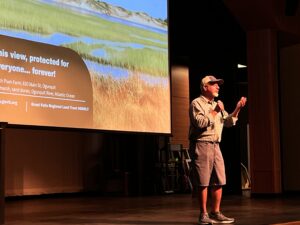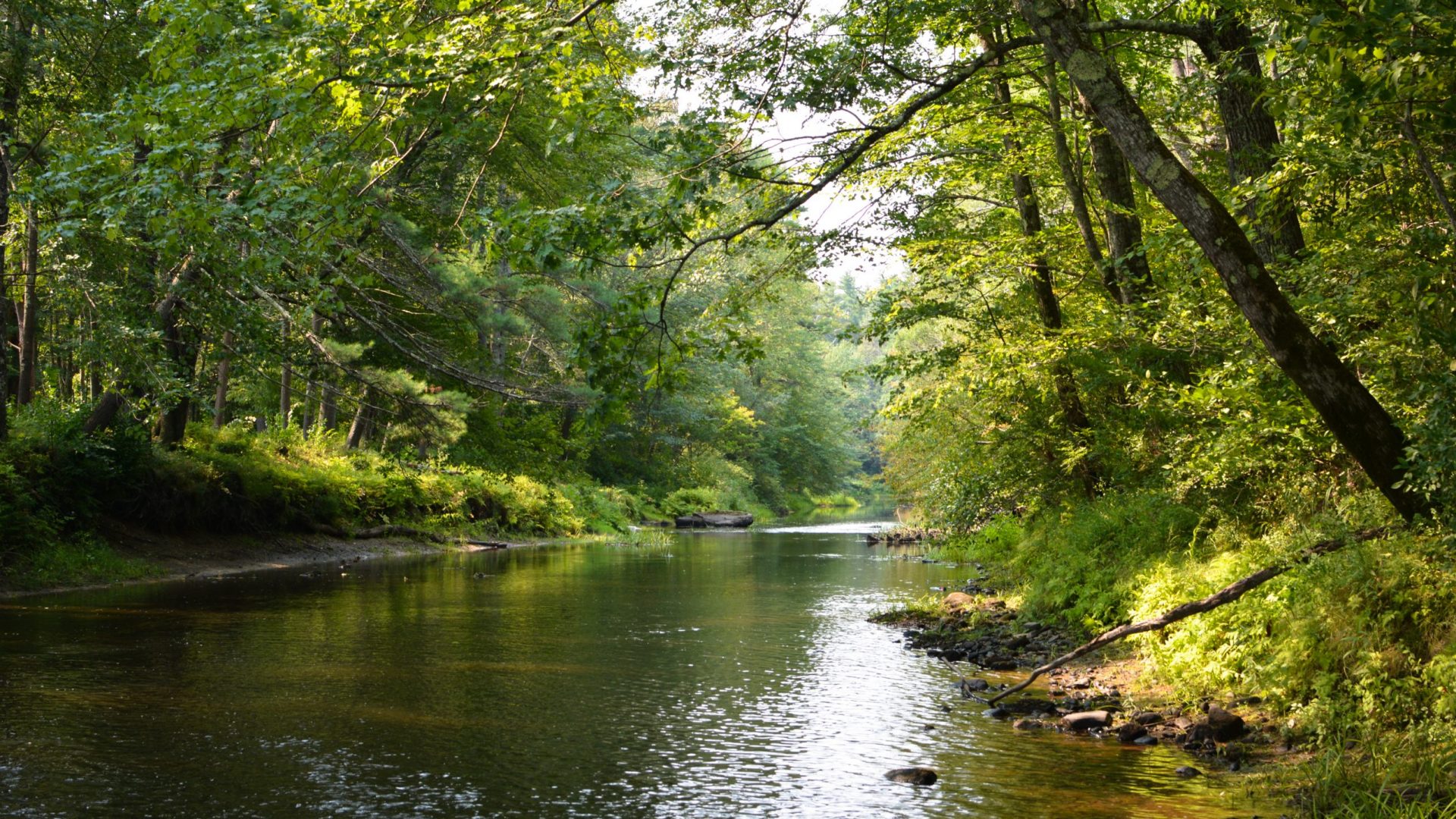By Owen Wadlington
On Friday, September 23rd, Great Works Regional Land Trust (GWRLT) organized the Wild and Scenic Film Festival hosted at Wells Public High School in the beautiful Olenn Performing Arts Center. The evening’s presentation showcased a diverse range of international short films, focusing on environmental issues, the importance of wildlife conservation, and the significance of human connection with the natural world. Eldridge Lumber & Hardware and Kennebunk Savings bank sponsored the event.
Nine films were presented at the Wild and Scenic Film Festival from 4pm to 8pm, with two intermissions held that afforded patrons the opportunity to socialize, purchase raffle tickets, and enjoy snacks and drinks provided by GWRLT. In total, more than fifty locals from across Southern Maine were in attendance at the event, including members of GWRLT’s vital volunteer staff, the land trust’s board of directors, and the employees who help to make GWRLT function.
During each intermission, raffle prizes were distributed by GWRLT’s Development and Outreach Coordinator, Katherine Derby. In the first intermission, door prizes were handed out through random drawing of blue ticket stubs. Prizes included a GWRLT thermos, as well as a prize tote bag. The main raffle event was held during the second intermission. Various businesses donated gift cards, including Las Olas in Wells and BeachFire Bar & Grill in Ogunquit.
I arrived at the film festival shortly after it had begun and was able to view the screenings of most of the short films exhibited that evening. There was a palpable quiet amazement throughout the auditorium, in equal measure because of how charming and outstanding the films were as entertainment, but also because of the inspiring message of conservation in each film.
The first film I saw was “Wild Hope: America’s BFF”. This film documented the story of the American black-footed ferret, a species native to our country that faced extinction in the mid-20th century. The black-footed ferret has an incredible comeback story; its population bounced back from the brink of disappearance thanks to the help of the Aaniiih and Nakoda nations, as well as the WWF. The film documented how the species has been steadily protected throughout Montana, South Dakota, and Wyoming, and how animal vaccination programs have helped to rebuild the population.
The film screened next was “The Bird in my Backyard”, a twenty-minute documentary that followed the story of Canadian citizen and naturalist Eric Pittman. The film showed how Pittman discovered that hummingbird populations had begun nesting in his backyard during the summer months. This film was deeply emotional and inspiring, culminating in a climax where a baby hummingbird finally leaves the nest and flies for the first time.
Afterwards, we watched “Flora, Fauna, Funga”, a deeply insightful film which follows the studies of Chilean-British mycologist Giuliana Furci. The film had a delightfully whimsical tone, featuring music by British musician Cosmo Sheldrake, which emphasized the strange, almost alien nature of the fungi which was being studied by the documentarians.
“Welcome Home” was exhibited after “Flora, Fauna, Funga”, and, similar to the first film I saw, was also a story of the reintroduction of an animal species that had faced extinction in its natural habitat. This time, we learned about the gray wolves and the story of how they were reintroduced to Colorado by the Colorado Parks and Wildlife state agency.
The penultimate film was “Polar Bear Country”, which is equal parts an informative documentary and a tourism advertisement for the town of Churchill, located in Manitoba, Canada. Polar Bear Country was an amazing film, which showed what life is like in one of the Northernmost settlements in the world, directly along the path of polar bear migration. We got to learn about how one community lives beside some of the most powerful animals on the planet, and the film even inspired me to want to visit Churchill someday, where tourism is one of the primary sources of their economy.
Finally, there was “Wingspan”, a film that told the story of wildlife photographer Joshua Asel. We got to watch Joshua as he took a journey to capture pictures of the American condor, the largest bird species in North America. The film was equal parts about the wildlife conservation of condors and a personal anecdote by Joshua about the importance of doing what inspires you.
Toward the end of the second intermission, GWRLT’s president of the board of directors, John Branagan, delivered a rousing speech about the importance of GWRLT’s mission and thanked everyone in the audience for their presence at the film festival. He emphasized that the work of land trusts like GWRLT helps secure undeveloped, natural land for future generations. He invited everyone in attendance to join GWRLT in the next chapter of land conservation, which impassioned all in attendance with inspired applause.
The film festival concluded with the presentation of “Wingspans”, and those in attendance dispersed into a warm, early Fall evening, with lingering warmth even after the sun had set. Attending the film festival felt as though I was playing a role in something far bigger than myself, not only because of the importance of GWRLT’s mission, but also because I was able to participate in an event that fostered such a strong sense of community among myself and fellow New Englanders.
Owen is an intern with Great Works Regional Land Trust this semester and a student at the University of New England majoring in Communications with a minor in Marine Biology.

GWRLT President of Board of Directors John Branagan delivering a speech during the second intermission of the film festival.

